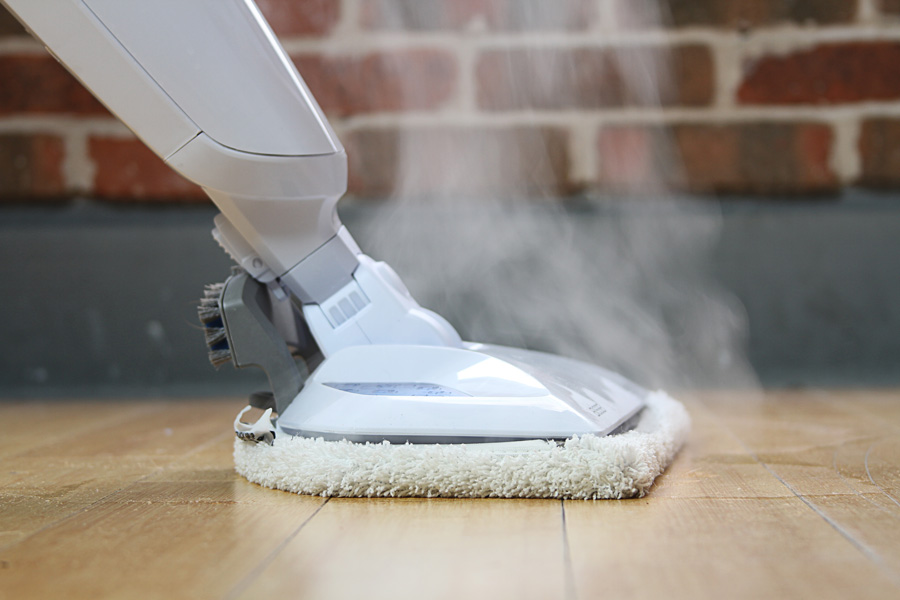You’ve heard the whispers, seen the commercials, and maybe even glimpsed a steam mop in action. But, when it comes to your precious hardwood floors, is a steam mop a friend or foe? Can this powerful cleaning method truly conquer dust, grime, and even sticky spills while preserving the beauty of your wood?

Image: www.inboundwriter.com
Navigating the world of floor cleaning can feel daunting. There are so many tools, techniques, and products, and making the right choice can seem like a puzzle. This guide will unravel the mysteries of steam mops and hardwood floors, demystifying the process and empowering you to make an informed decision for your home.
Understanding Steam Mops and Hardwood Floors
First, let’s break down the basics. Steam mops work by generating hot steam, which is then released through a nozzle to loosen dirt and bacteria on surfaces.
Hardwood floors are renowned for their elegant appearance and durability. However, they’re also susceptible to damage from excessive moisture. So, the question becomes: can steam mops effectively clean hardwood floors without causing harm?
The Potential Benefits of Steam Mops for Hardwood Floors
There are some compelling reasons to consider steam mopping your hardwood floors:
1. Deep Clean Without Harsh Chemicals
One of the main appeals of steam mops is their ability to achieve a deep clean without the need for harsh chemicals. Unlike traditional cleaning solutions, which can leave residues and potentially dull the finish of your wood, the steam itself provides the cleaning power. This makes steam mopping a more eco-friendly option for those concerned about chemical exposure.

Image: www.bustle.com
2. Germs and Bacteria Be Gone
Steam, thanks to its high temperatures, can effectively kill germs and bacteria. This is especially valuable for households with children, pets, or anyone with allergies or sensitivities.
3. Removing Stubborn Stains
Steam can effectively loosen and remove stubborn stains from hardwood floors, such as sticky spills, food stains, and even pet messes.
The Potential Risks of Steam Mops for Hardwood Floors
While steam mops offer cleaning benefits, it’s crucial to understand their potential drawbacks when it comes to hardwood floors.
1. Moisture Damage
Hardwood floors are susceptible to moisture damage, especially if they are unfinished or have a sealant that is not water-resistant. Excessive moisture from a steam mop can lead to warping, cupping, or even cracking. This is particularly notable for solid hardwood floors, which don’t have the stability of engineered wood.
2. Finish Degradation
The steam from certain steam mops can potentially degrade the finish of your hardwood floors. While the steam itself might not harm the wood, it can potentially soften or even damage the protective sealant over time. This can lead to dullness, scratches, and an overall less desirable appearance.
3. Mold and Mildew Growth
Not all hardwood floors are equipped to handle the moisture introduced through steam mopping. In situations where the moisture doesn’t readily evaporate, it can create ideal conditions for mold and mildew growth, particularly in humid environments.
Tips for Steam Mopping Hardwood Floors Safely
If you’re determined to use a steam mop on your hardwood floors, follow these essential tips to mitigate the risks:
1. Test in an Inconspicuous Area
Before steam mopping your entire floor, test the steam mop in a small, inconspicuous area. Observe the reaction of your wood to the steam. If you notice any color changes, warping, or softening of the finish, discontinue use.
2. Choose a Steam Mop Designed for Hardwood Floors
Not all steam mops are created equal. Look for models specifically designed for hardwood floors. These will typically have settings that control the amount of steam produced and the temperature, minimizing the risk of damage.
3. Don’t Over-Steam
Avoid using the steam mop on one spot for too long. Move it along quickly and don’t dwell. Excessive moisture can quickly lead to damage.
4. Dry Thoroughly
After steam mopping, dry your hardwood floors thoroughly using a dry microfiber mop or a cloth. The faster you dry the floors, the less opportunity there is for moisture damage.
5. Use a Cleaning Solution Specifically Formulated for Hardwood Floors
While steam mops can clean effectively without harsh chemicals, some models allow for the addition of cleaning solutions. Opt for a solution specifically formulated for hardwood floors to further enhance cleaning without compromising the wood’s finish.
Alternatives to Steam Mopping for Hardwood Floors
If you’re concerned about the risks associated with steam mops, consider alternative methods for cleaning your hardwood floors:
1. Dry Dusting
Regular dry dusting with a microfiber cloth or a dust mop helps to remove loose dirt, dust, and debris, minimizing the need for more vigorous cleaning. This is an excellent option for everyday maintenance.
2. Damp Mopping
Damp mopping with a microfiber mop and a cleaning solution specifically formulated for hardwood floors is an effective way to remove dirt, grime, and spills without the risk of excessive moisture.
3. Hardwood Floor Cleaner
Using a hardwood floor cleaner can be beneficial for deep cleaning. You can apply the cleaner directly to your floor and then wipe it off with a damp cloth or a mop.
4. Professional Cleaning
For a thorough clean, consider hiring a professional cleaning service. They have the expertise and equipment to safely clean your hardwood floors without risking damage.
Are Steam Mops Good On Hardwood Floors
Conclusion
The decision to use a steam mop on your hardwood floors requires careful consideration. While steam mops offer a powerful cleaning solution, their potential to damage wood floors is a significant factor. By understanding the risks and benefits, and by following the tips for safe use, you can determine if a steam mop is the right choice for your home. Ultimately, the best approach is to choose a cleaning method that balances cleaning effectiveness with the preservation of your precious hardwood floors. Remember, regular maintenance, regardless of the method, is key to maintaining the beauty and longevity of your wood floors.





